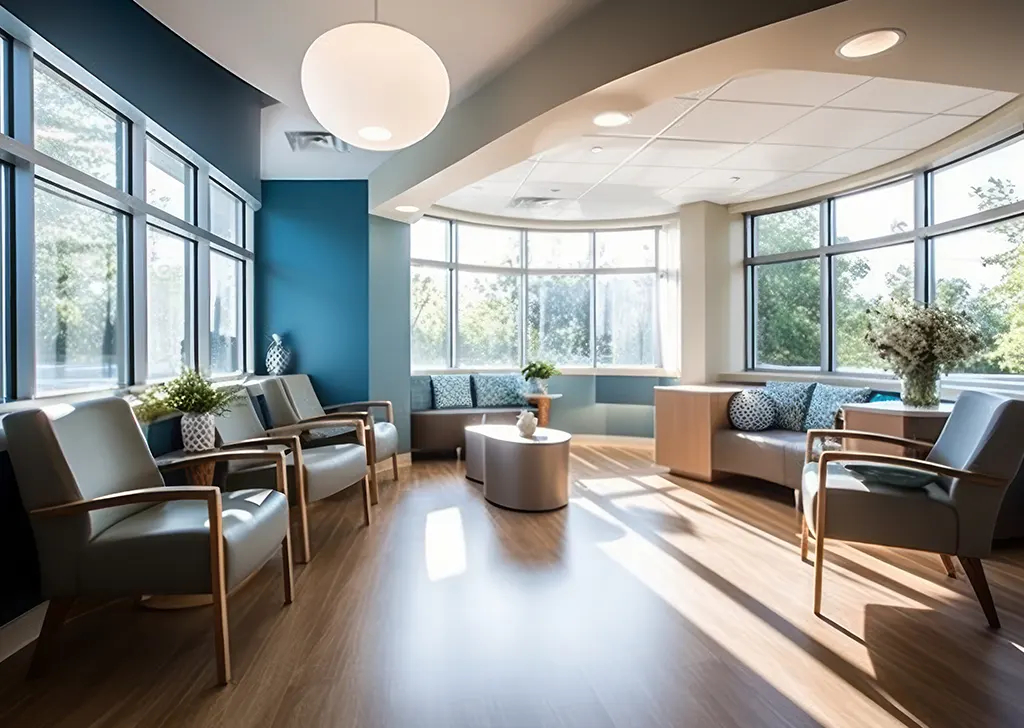In the world of healthcare real estate, one critical element often overlooked but with profound implications is design. The way a healthcare facility is designed can significantly impact the patient experience, influencing their well-being, comfort, and overall satisfaction. In this article, we will delve into the pivotal role of design in healthcare real estate, exploring concepts like biophilic design, patient-centered layouts, and the psychology of color to understand how thoughtful design principles can create healing environments.
The Power of Biophilic Design
Biophilic design is a concept rooted in the idea that humans have an innate connection with nature. In healthcare settings, integrating elements of nature into the design can have a therapeutic effect on patients. Think of hospital rooms with ample natural light, greenery, and views of outdoor landscapes. Such elements not only improve the aesthetic appeal of a space but also contribute to a healing atmosphere.
Studies have shown that exposure to nature can reduce stress, anxiety, and pain perception in patients. Hence, healthcare real estate professionals must consider biophilic design principles when planning and constructing healthcare facilities. Incorporating elements like indoor gardens, natural materials, and views of nature can contribute to a more calming and restorative environment for patients and staff alike.
Patient-Centered Layouts
A patient-centered approach to design is at the core of creating healing environments. It involves placing the patient’s needs and comfort at the forefront of the design process. This can manifest in various ways, such as optimizing the layout for ease of navigation, ensuring ample space for family and visitors, and providing comfortable waiting areas.
One example of patient-centered design is the creation of decentralized nursing stations. Instead of a centralized station, which can be intimidating to patients and disrupt their privacy, decentralized stations place nurses closer to patient rooms. This allows for more personalized care and quicker response times, contributing to a more positive patient experience.
The Psychology of Color
The choice of colors in healthcare design is not arbitrary; it is deeply rooted in psychology. Different colors can evoke specific emotions and feelings. For instance, soothing colors like blues and greens are often used in healthcare settings to promote relaxation and reduce stress. On the other hand, vibrant colors may be employed in pediatric facilities to create a cheerful and engaging atmosphere.
Understanding the psychology of color is crucial in healthcare real estate, as it can influence the emotional state of patients and visitors. Thoughtful selection of color schemes in patient rooms, waiting areas, and corridors can contribute to a more healing and comfortable environment.
The Role of Technology
In today’s healthcare landscape, technology plays an increasingly significant role in design. Integrating state-of-the-art technology into healthcare facilities can enhance the patient experience and improve the efficiency of care delivery. For example, electronic health record (EHR) systems can streamline the documentation process, reducing paperwork and allowing healthcare providers to spend more time with patients.
Moreover, telemedicine and telehealth technologies are becoming integral parts of healthcare design, enabling virtual consultations and remote monitoring. The integration of such technologies must be seamless and user-friendly, aligning with the overall design philosophy of patient-centered care.
Conclusion: Designing for Healing
In healthcare real estate, design is not merely an aesthetic consideration; it is a powerful tool for creating healing environments that prioritize patient well-being. Biophilic design, patient-centered layouts, the psychology of color, and the integration of technology are all essential elements that can contribute to a positive and restorative patient experience.
At HBRE, we understand the profound impact of design on healthcare real estate. Our expertise in crafting healing environments ensures that our clients’ healthcare facilities are not only functional and efficient but also conducive to patient well-being. We are dedicated to creating healthcare spaces that reflect the highest standards of design excellence, ultimately enhancing the quality of care and patient satisfaction.
As you embark on your healthcare real estate journey, remember that design is not an afterthought but a strategic consideration that can elevate your healthcare facility to new heights of healing and excellence. Contact us today at [email protected] to discover how our design expertise can transform your healthcare real estate project into a space that truly heals and comforts.




